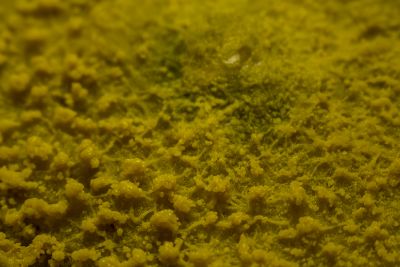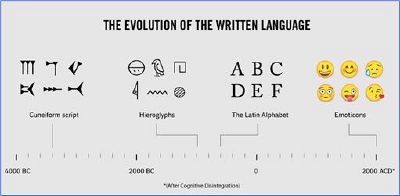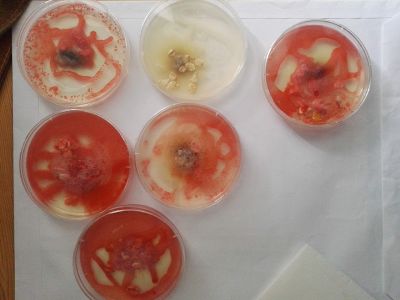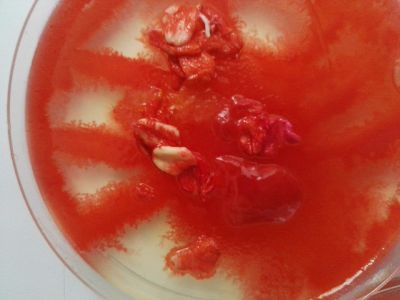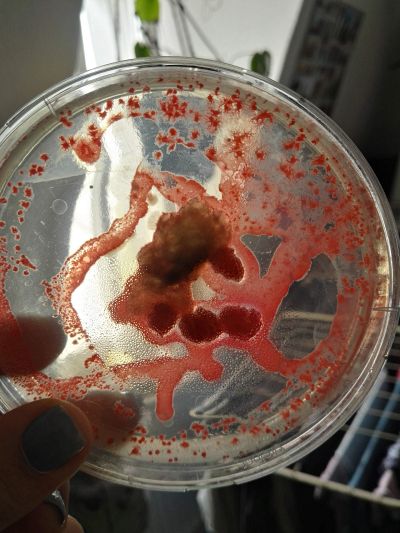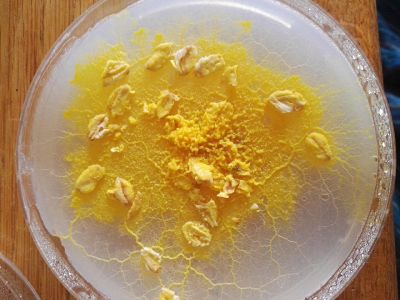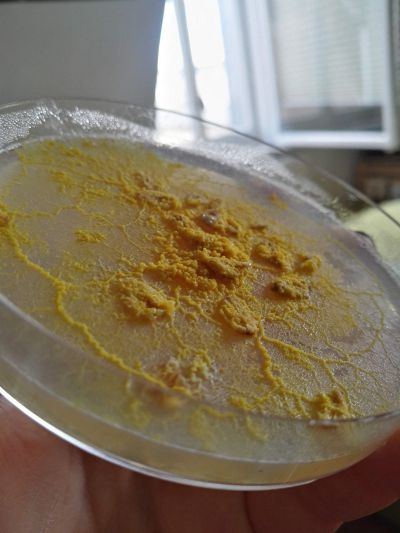Physarum Polycephalum
Known as the "many-headed slime" is a protist organism that lives in dark and humid places and outdoors feeds on bacteria and fungi.
Physarum polycephalum conceive the essence of improvisation for survival. It spreads, seeks for food and in every steep recognise it self with the intention of prevail. Physarum is a millions of nuclei organism, all sharing a cell wall, all operating as a single entity. The particularly way that Physarum grows also respond to a repetitive call-response pattern. They go two steeps forward and one backwards, then two forwards and one backwards and so on... They talk to each order und response, then grow...
PROJECT...
Writing system for Non-Human species
In the history of the world, the phenomenon of writing arises when the spoken form reaches such prestige that it needs to take a physical form. Its function is the perpetuity of a message over time. A writing system is a type of symbolic system, used to express elements or expressible statements. All writing systems known in the world, have been and are developed by humans as from their needs. But what happens if human facilitates this system to other species?
According to science, there's no written, or carved symbols or anything that any non-human species has developed as a tool for communication. But, animals have a number of in-born qualities they use to signal their feelings, but these are not like the formed words we see in the human language. Countless species like bears, dogs, many insects, snakes, and cats do use chemical markings and pheromones for certain purposes. Some animals leave detailed messages for members of their own (and in some cases other) species by marking an object or the ground with a bodily excretion.
There has been scientific intentions to teach animals the human lenguaje. One of the most contested examples is Nim Chimpsky, a chimpanzee named after noted linguist Noam Chomsky, who was taught over 100 signs in sign language in the '70s. Turning hand gestures into meaning certainly displays arbitrariness. But Herbert Terrace, the psychology that led the study doubted that Nim had really learned a language. He noted that Nim very rarely signed spontaneously; instead, he would react to signs his teacher was making.
Bacteria for example communicates thought chemicals, they expel one molecule in order to express some need to the group. They need communication because they need to carry on tasks that are impossible to do by just one individual, so as humans they express desires so they can achieve goals.
The way Bacteria communicates reveals how cells (the building blocks of complex life) first came together. Molecular biologists believe that this way of proceeding from Bacteria reveals that they invented the way that groups of organisms or cells work together to do things cooperatively.
But what about writing lenguaje? What happens if human facilitates this system to other species, or some king of symbolic system? How does it look, how would that work?
CONCLUTION...
It has been proved that there is a way of interaction between non-human species that allow them to reach goals, feed, pair or survived either through sounds, waves, chemical reactions or bodily excretion. But not any species aside from Humans had developed a symbolic language capable of prevail and transform. Physarum, unlike Human, its a primitive organism, but nevertheless it performs in such an organized and clever way on searching for the food with the bests nutrients. That's how Physarum manages to survive. Like so much other things in the natural world, human lenguaje evolved, didn't just arises:
IDEA...
Using the experiment conducted in SS2018 [1] with the point of view from physarum as a pictorial tool, I want to develop a writing exercise with Slime Mold. (I am considering the creation of a typographical anatomy or writing system based on the nutritional behavior of Physarum and its primordial structure) ( Or... taking a well based typography and make physarum write messages with it)
Start
The first attempt at cultivating Physarum in order to begin the project (in the common way: Agar+Oat flakes) was negative. There was a proliferation of a red bacteria.
The second try was successful. We have now a strong and healthy Slime Mood to start with.
It is necessary to keep growing Physarum using the usual method (Agar+Oat flakes) so that samples of Physarum are always available for developing the experiment.
